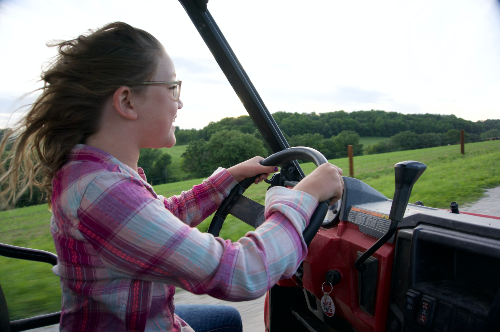|
This is a repost from a series of newsletters shared with AAM parents.
Being learner-driven. First and key to this understanding is the difference between learner-centered and learner-driven. Center: a point, area, person, or thing that is most important or pivotal in relation to an indicated activity or condition Driven: operated, moved, or controlled by a specified person or source of power Learner-centered describes a popular approach where learner involvement in activities is central to the design. The model includes more choice and more experiential learning. The key question here is: How can I involve the learner in this experience? In learner-driven pedagogy, the learner takes control of their own learning. In this environment, the learner makes the decisions and choices for themselves and has a significantly higher degree of autonomy. The key question is: How can the learner own this experience? How and Why does the Learner-Driven Approach Work? A learner-driven approach inspires, equips and connects young people who embrace a Hero’s Journey to make principled decisions towards a more satisfying and fulfilling life because: ● The energy behind learning – and especially transformational learning – comes from the curiosity and drive of an individual learner, supported in the community. The freedom to choose is the rocket fuel of learning. ● The Hero’s Journey story of an individual hero, facing difficult challenges, on a quest, in a community, in search of a worthy grail that changes the hero in the process, is the time tested tale of human development that has shaped civilization through the ages. ● The responsibility for setting the contracts and covenants that will form a community, along with choosing recipes, processes and examples to solve real world and governance problems, develops complex problem solving skills and a sense of due process and justice in action. ● Socratic discussions develop listening skills, logic, perspective, and critical thought, and dispel the idea that the adult is the ‘expert’ who is there to impart knowledge. ● Multi-age studios mean learning can be shared peer to peer and within squads, through critiques and joint projects, in a way that shares and accelerates learning in an exponential way – and includes high levels of fun and engagement. ● Offering self-paced work, in an environment where many types of gifts are celebrated, in an environment that praises improvement rather than artificial standards, leads to an appreciation of excellence from within, with multiple ways to win. Using trial and error experimentation includes experiencing the joys and fallouts of the process of learning. Continual improvement happens when learners try something and feel the consequences. ● Over time, through self-management and self-governance, learners shift from “me and now” to setting goals for the day, week, session and year – lengthening time horizons. They look to Running Partners, squads, studios and campus, in a way that expands and deepens relationships. ● Character development comes from making courageous choices in the face of real ethical dilemmas, etching habits in the soul. Young heroes have experience in non-learner driven contexts of being ordered about by adults. At Acton, we diminish the power adults have, instead empowering young heroes with the freedom and responsibility to choose, then see what their choice brings, and learn from that choice. This type of learning requires permission to fail early, cheaply, and often to learn from mistakes. Properly protected from adult authority, young heroes in learner-driven studios: ● Learn to learn by internalizing recipes, processes and mental models as habits; ● Learn to do in a way that delivers real world skills; and ● Learn to be by etching moral habits and ancient archetypal lessons deep in the soul. All of this leads to a next great adventure in life, that eventually blossoms into a calling that changes the world. Go Deeper: Read this Forbes article about Acton as a learner-driven innovator.
0 Comments
Leave a Reply. |


 RSS Feed
RSS Feed